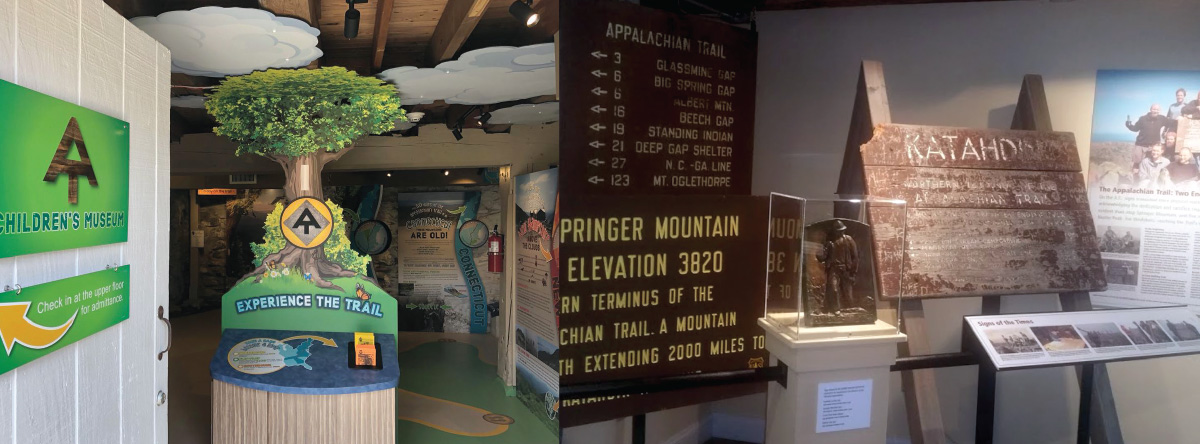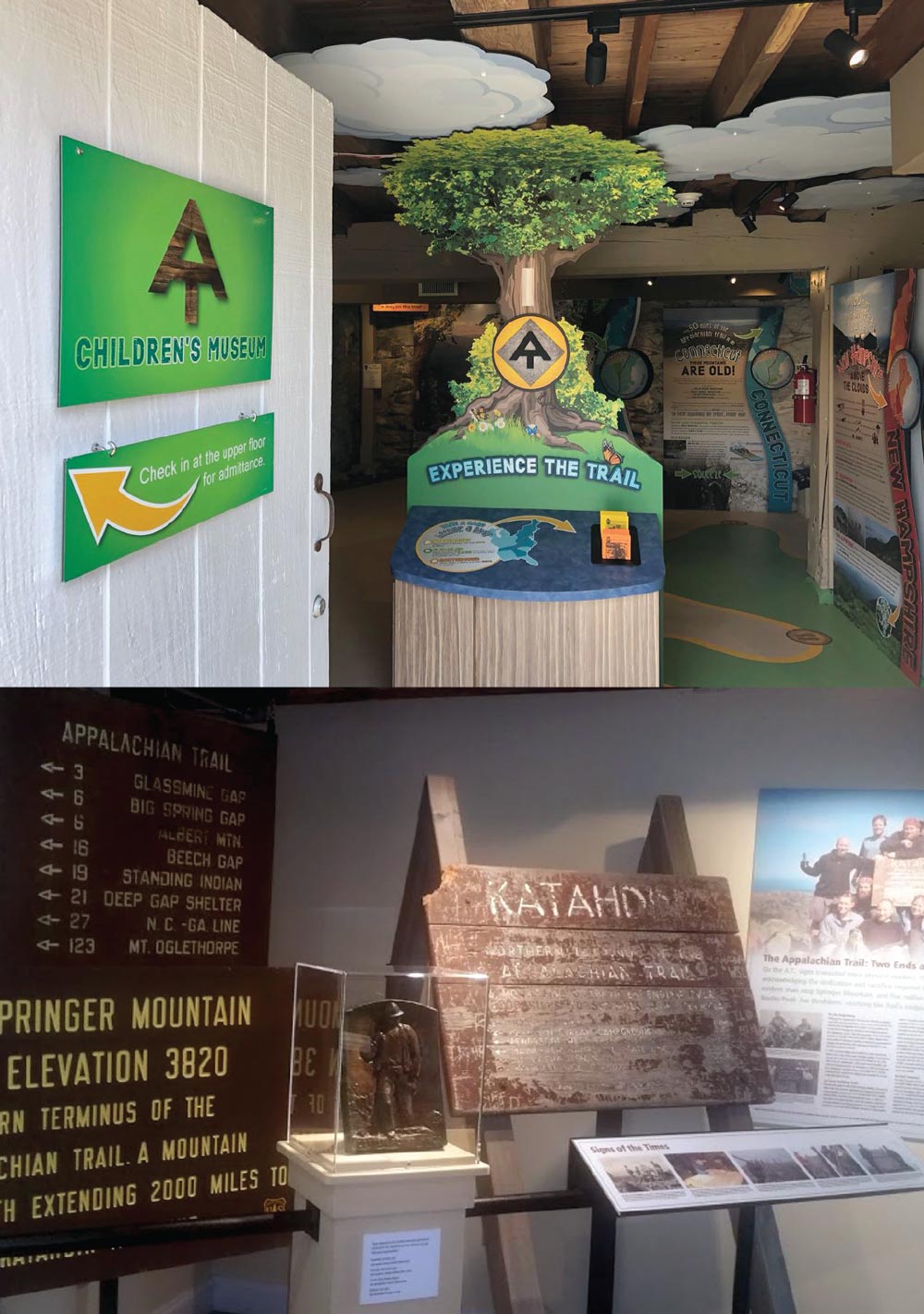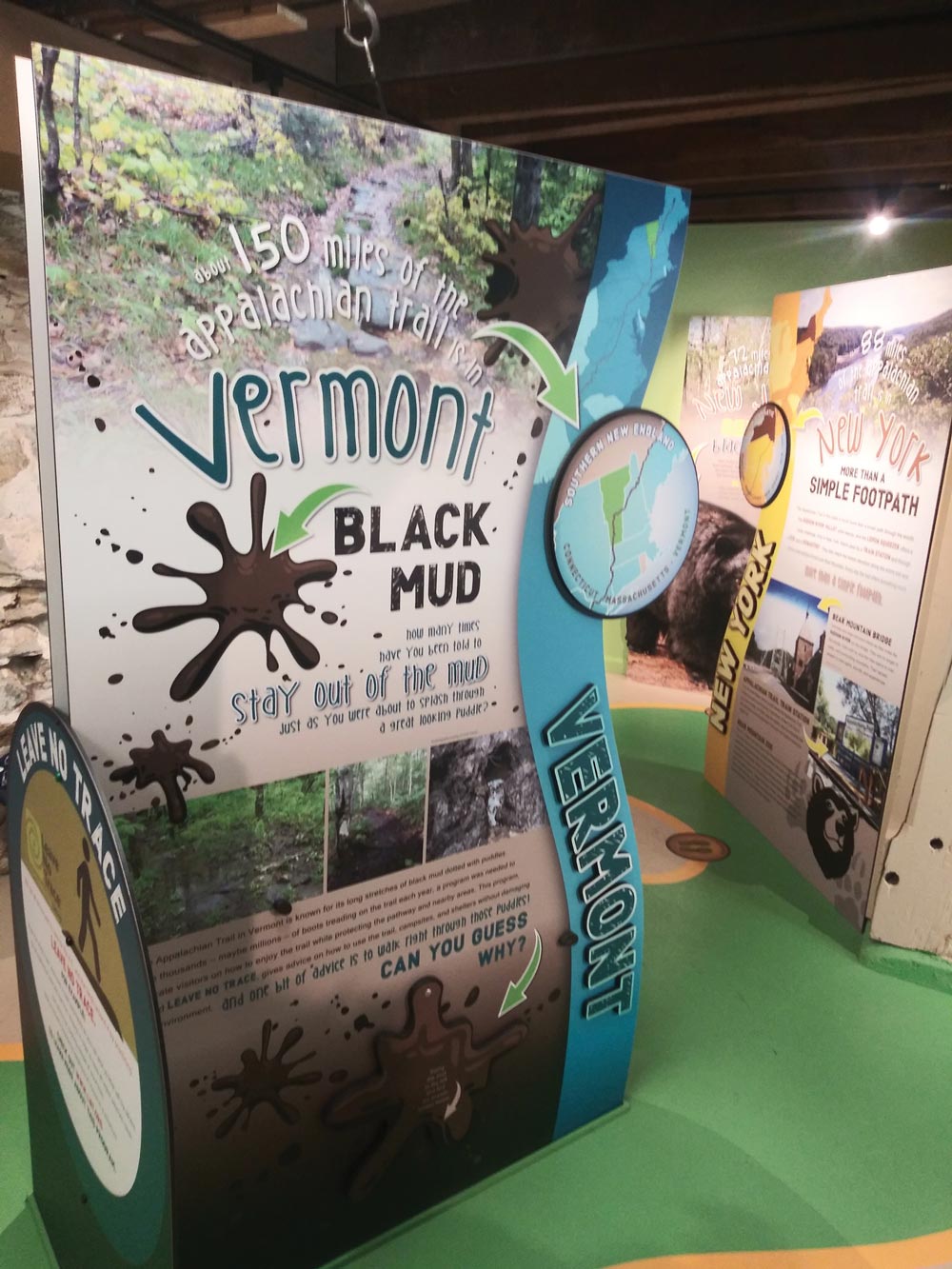


Hall of Fame honorees this year were Jean Cashin, one of the most revered Appalachian Trail Conservancy (ATC) employees; Paul Fink, who designed much of the original southern A.T.; Don King, the National Park Service head of land acquisition for the A.T. and other trails; and the late Bob Proudman of the ATC, noted for his work on the physical Trail. Mike Wingeart, former Appalachian Long-Distance Hikers Association coordinator, received the Lifetime Achievement Award.
The five new exhibits opened were: “The A.T. and the National Scenic Trails; Hikanation,” a cross country group hike in 1980-81 by the new American Hiking Society, which utilized 500 miles of the A.T.; “Blazing the Trail in Maine,” featuring Myron Avery’s folding kayak; “A Night on the Trail,” a children’s exhibit of a Trail shelter; and “Walkin’ Jim Stolz,” the famous A.T. hiker and musician, featuring his hiking guitar “Stella,” which he credited with breaking a fall and saving his life. Also, the initial entry in a revolving hiker exhibit area, is the feather-light pack used by current Trail legend Heather “Anish” Anderson to set the unsupported A.T. hiking record.

As a reflection of the A.T. itself, the museum was created, built, and is run largely by volunteers. There is a part-time manager (and A.T. thru-hiker), Nate “Angry Bird” Shank, who coordinates volunteers and deals with myriad tasks necessary to run even a small museum properly. Local and long-term volunteers, as well as interns are welcome for every task that the museum performs.
The museum is located in Pine Grove Furnace State Park in Gardners, Pennsylvania, close to the geographic midpoint of the A.T. and adjacent to the Pine Grove General Store (location of the “Half Gallon” ice cream challenge) and Ironmasters Hostel. Shortly after the museum opened, the A.T. was relocated a short distance, taking it off a park road and bringing it past the store and the museum itself. The Trail continues north on a 19th Century roadbed, uncovered before the museum opened by volunteers clearing overgrowth on its surrounding grounds. The museum building is located in a historic grist mill that dates back to about 1765.
Among projects underway are a native plants garden and a reconstruction on the museum grounds of a stone trail shelter built by first thru-hiker, Earl Shaffer, around 1960. The museum is hoping to get Trail maintaining clubs involved in this project. Also underway is an exhibit on historic Trail saws and other tools.